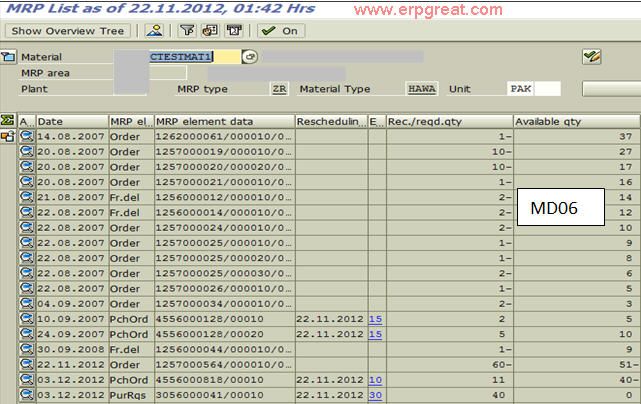

Md05 Table Download Scientific Diagram
There is a lot of documentation about rescheduling and the following WIKIs and notes should be useful:1745312 MRP creates redundant proposals though there are fixed future receipts which can cover the requirements. To reflect changes in business environment MRP needs to be adjusted accordingly, mainly through fine tuning of master data e.g. Lead times, minimal order quantities, insourcing vs outsourcing etc.Issues from many different application areas are reflected in transaction MD04, since this transactio reads data from many different tables.Download scientific diagram Age model based on 17 AMS radiocarbon age determinations of core MD052908 (Table 1). The horizontal dashed line (Boundary).On this document you will find the most frequent issues observed on transaction MD04.1 - An MRP element is displayed on transaction MD04, however, it does not affect the available quantity, that means, it is not MRP relevant.This issue can happen for many different planning elements, from sales orders to dependent requirements and there are many different causes for this issue.On the following note you will find a detailed explanation for the possible causes for each different planning element:1825187 - MD04/MD05: Incorrect quantity for an MRP elementA planning element that is already completed is still displayed on MD04 or a planning element is incorrectly displayed on MD04. It generally happens for sales orders or for subcontracting requirements but it can also happen for another planning elements, such as dependent requirements.
Meanwhile, the clay mineral variations on the continental slope off the Mekong River (Cores MD01-2393, SO18383-3, and MD97-2150) have been driven by the chemical weathering in the Mekong River basin that associates with the East Asian summer monsoon evolution. Based on the smectite/(illite + chlorite) ratio in six cores, we found that the clay mineral variations on the continental slope off Sunda Shelf (Cores MD05-2893, CG2, and SO18287-3) have been controlled by the sea-level changes during the last glacial sea-level lowstand and by the East Asian monsoon during the Holocene sea-level highstand periods. To reveal the dynamic transport processes of clay minerals and related controlling factors in the southern South China Sea, spatiotemporal variations of clay mineral assemblages from previous studies (Cores MD05-2893, CG2, SO18287-3, MD01-2393, SO18383-3, and MD97-2150) are integrated to assess their controlling factors over the past 30 ka. Clay minerals preserved in marine sediments carry important information about sediment transport processes from sources to sinks.
However, these controlling factors play independent roles in different parts of the southern South China Sea, which appears more heterogeneous than generally expected.


 0 kommentar(er)
0 kommentar(er)
